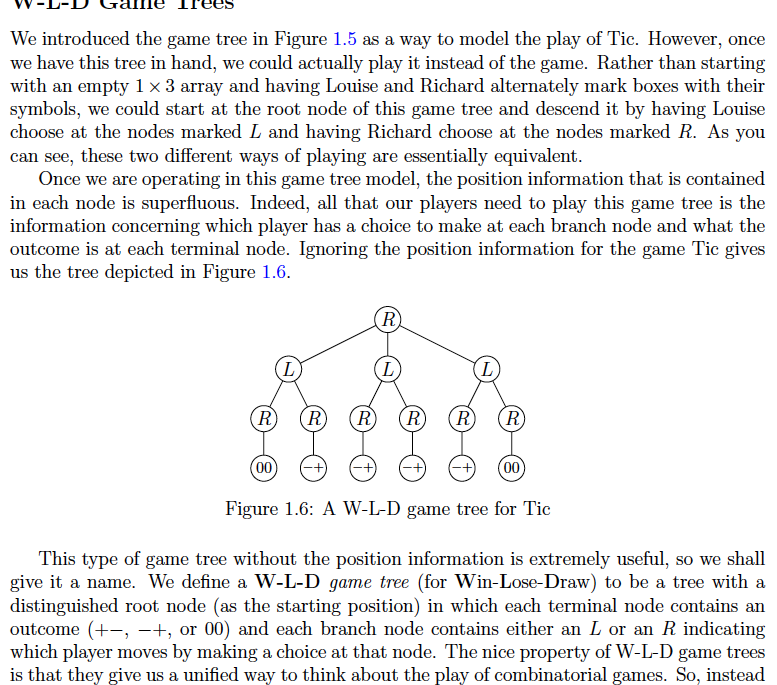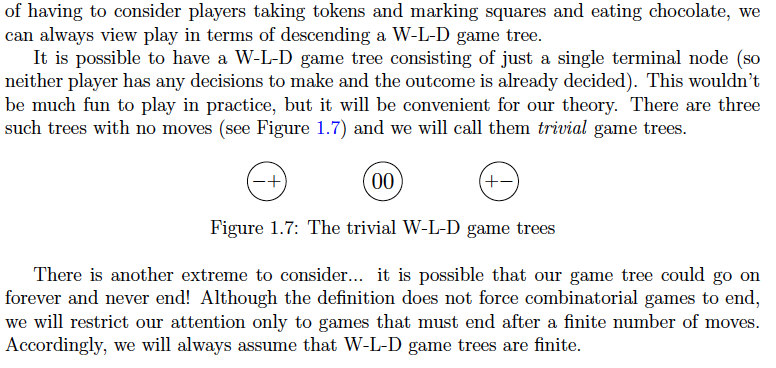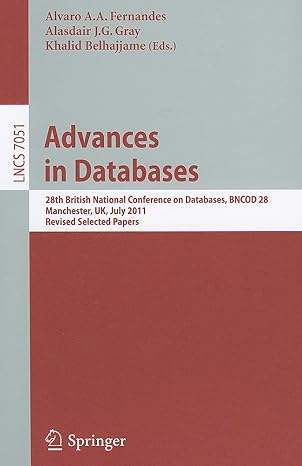Problem 2. Determine the depth of the WLD game tree associated with each position with
Louise moving rst.
(a) A position in Cut-Cake consisting of a single 2x3 piece.
(b) An n-brick position in Pick-Up-Bricks.
(c) An mxn array in Chop.
ATTACHED THE DEFINITION OF WLD GAME TREE>>>>



Problem 2. Determine the depth of the WLD game tree associated with each position with Louise moving first. (a) A position in Cut-Cake consisting of a single 2 x 3 piece (b) An n-brick position in Pick-Up-Bricks. (c) An m n array in Chop. rees We introduced the game tree in Figure 1.5 as a way to model the play of Tic. However, once we have this tree in hand, we could actually play it instead of the game. Rather than starting with an empty 1x 3 array and having Louise and Richard alternately mark boxes with their symbols, we could start at the root node of this game tree and descend it by having Louise choose at the nodes marked L and having Richard choose at the nodes marked R. As you can see, these two different ways of playing are essentially equivalent Once we are operating in this game tree model, the position information that is contained in each node is superfluous. Indeed, all that our players need to play this game tree is the information concerning which player has a choice to make at each branch node and what the outcome is at each terminal node. Ignoring the position information for the game Tic gives us the tree depicted in Figure 1.6 00 (00 Figure 1.6: A W-L-D game tree for Tic This type of game tree without the position information is extremely useful, so we shall give it a name. We define a W-L-D game tree (for Win-Lose-Draw) to be a tree with sa distinguished root node (as the starting position) in which each terminal node contains an outcome (+-, -+, or 00) and each branch node contains either an L or an R indicating which player moves by making a choice at that node. The nice property of W-L-D game trees is that they give us a unified way to think about the play of combinatorial games. So, instead Problem 2. Determine the depth of the WLD game tree associated with each position with Louise moving first. (a) A position in Cut-Cake consisting of a single 2 x 3 piece (b) An n-brick position in Pick-Up-Bricks. (c) An m n array in Chop. rees We introduced the game tree in Figure 1.5 as a way to model the play of Tic. However, once we have this tree in hand, we could actually play it instead of the game. Rather than starting with an empty 1x 3 array and having Louise and Richard alternately mark boxes with their symbols, we could start at the root node of this game tree and descend it by having Louise choose at the nodes marked L and having Richard choose at the nodes marked R. As you can see, these two different ways of playing are essentially equivalent Once we are operating in this game tree model, the position information that is contained in each node is superfluous. Indeed, all that our players need to play this game tree is the information concerning which player has a choice to make at each branch node and what the outcome is at each terminal node. Ignoring the position information for the game Tic gives us the tree depicted in Figure 1.6 00 (00 Figure 1.6: A W-L-D game tree for Tic This type of game tree without the position information is extremely useful, so we shall give it a name. We define a W-L-D game tree (for Win-Lose-Draw) to be a tree with sa distinguished root node (as the starting position) in which each terminal node contains an outcome (+-, -+, or 00) and each branch node contains either an L or an R indicating which player moves by making a choice at that node. The nice property of W-L-D game trees is that they give us a unified way to think about the play of combinatorial games. So, instead









